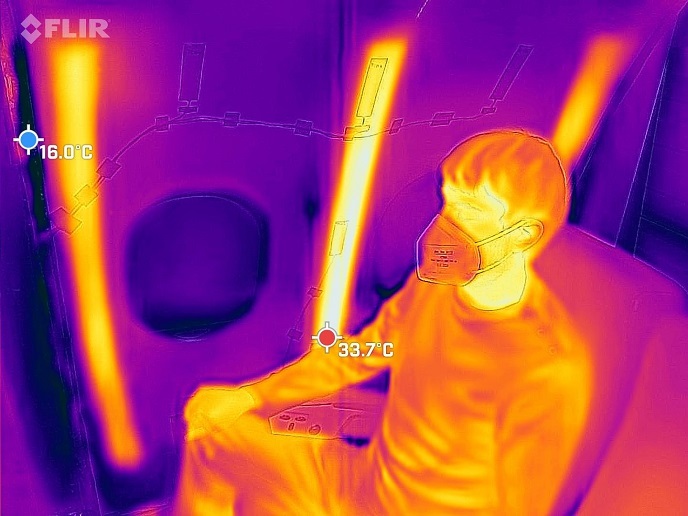Novel panels improve aircraft heating efficiency
Passenger aircraft cruise at 30 000 to 40 000 feet (9 to 12 km), where the air is relatively stable. This makes for smooth and comfortable flight. However, at those altitudes, the air is also dangerously cold, -40 to -60 °C. Commercial aircraft utilise various kinds of heaters for passenger comfort. A common type is compressors powered by the engines. Yet these, and other types including electric heaters, are fairly old technologies and use considerable energy. The Environmental Control System uses more power than any other during cruise flight. Newer alternatives are more energy efficient and lighter. The EU-funded RADIANT PANEL project developed a new, thermally efficient heater panel for aircraft. It optimises heating for passenger comfort but at reduced energy cost compared to conventional technologies. Additionally, the panels are located between the aircraft’s outer skin and the interior sidewall, optimising up space. The panels are presently tailored for the A330 aircraft(opens in new window) but could be adapted to any passenger aircraft. The project designed, manufactured, tested and validated demonstrator units.
New kind of thermostat
One factor in the panels’ efficiency is a new system that maintains the temperature at a pre-set level like a thermostat but via a principle called the positive temperature coefficient(opens in new window) (PTC) effect. Dr Baptiste Voillequin, project coordinator, explains: “This means that the Joule effect(opens in new window) is lowered as temperature increases, with a shut-off temperature at which no more Joule effect occurs, so the temperature cannot increase anymore.” The Joule effect is the heat produced by passing an electrical current through a conductor. The PTC system simplifies and optimises control of the temperature without additional electronics or power-control systems.
Radiative heating element, easily integrated
The panels are also innovative in that they integrate a radiative heating element. “This adds a radiative contribution to the warmth perceived by passengers,” adds Voillequin. Most heating systems rely on convection, whereby air currents transport the heat. The radiative element does not entirely replace convection on the aircraft, but it makes passengers feel warmer at lower temperatures. Using simulations, researchers determined the minimum effective coverage area, and the optimal locations, necessary for the elements to deliver efficient heating. Apart from the energy savings, this system also avoids the weight and complexity of existing heating systems. The heating elements themselves are also novel. They consist of PTC film, a conductive carbon fibre material manufactured from cellulose. The PTC films also include connectors that allow the panels to be plugged-in to aircraft electronics. So far, the team has achieved a working demonstrator in a ground based aircraft cabin mock-up. This has been tested and verified. Although the ‘Predicted Mean Vote’ model has been used previously in automotive applications, the project has been the first to use it in an aerospace application. Researchers will continue the development, including in-flight validation of the technology and other potential applications (water piping, flooring, and trolleys). The panels will be sold to airlines ready for easy installation into aircraft. The eventual outcome will be more energy-efficient aircraft heating. This will cut operating costs and reduce fuel consumption. Radiant Panel received funding from CleanSky2 Joint Undertaking(opens in new window), a public-private partnership set-up to develop innovative technologies aimed at reducing gas and noise emissions in civil aviation.







